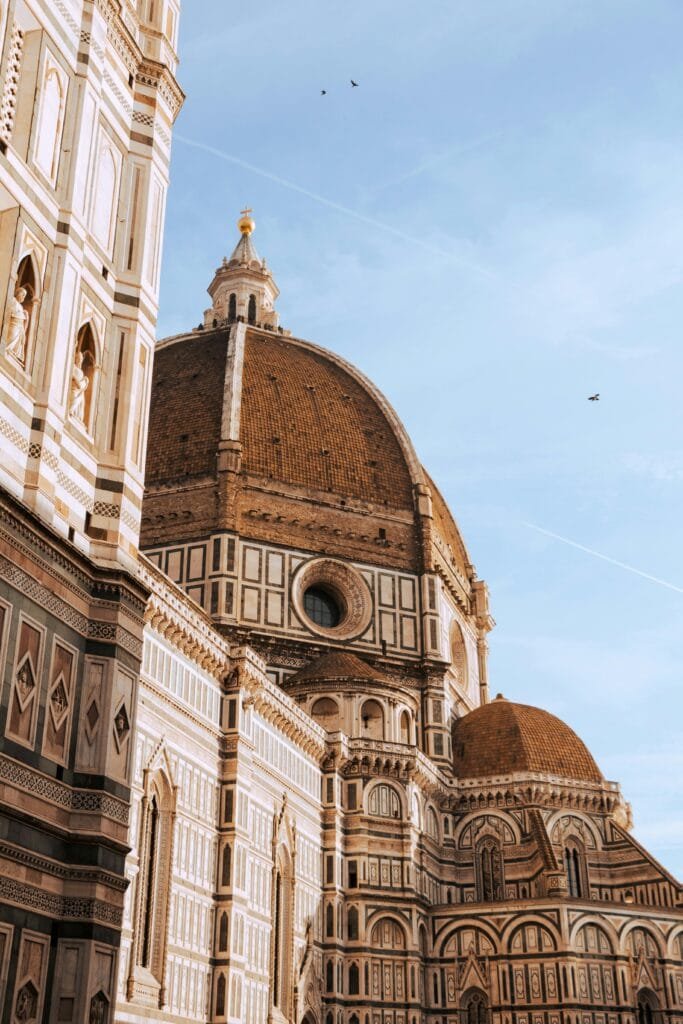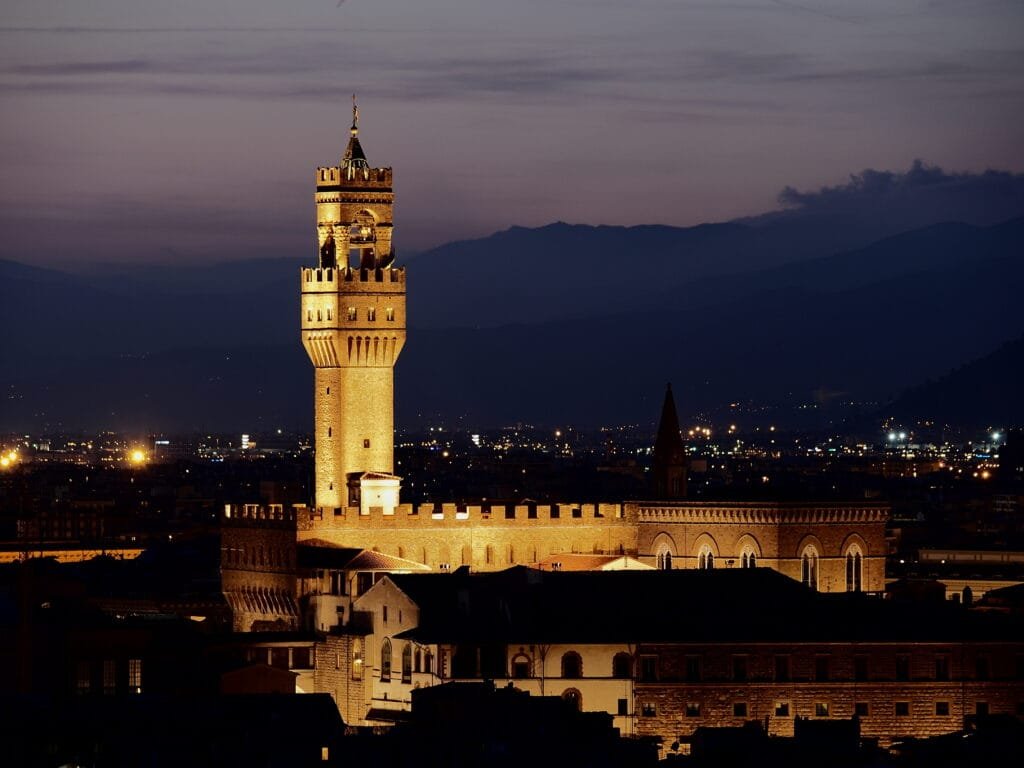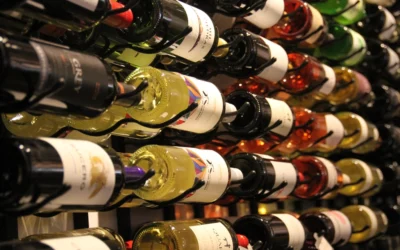Introduction
Florence, the heart of Tuscany, is a city that breathes history, art, and culture. Known as “The Cradle of the Renaissance,” it was home to some of the greatest artists, architects, and thinkers of all time. From Michelangelo’s David to the stunning Florence Cathedral (Duomo), every corner of the city tells a story of innovation and creativity.
But Florence is more than just a city frozen in time. It’s a vibrant, bustling place where ancient traditions blend seamlessly with modern life. Whether you’re strolling through its charming streets, indulging in its world-renowned cuisine, or admiring the masterpieces housed in the Uffizi Gallery, Florence promises an unforgettable experience.
The History of Florence
Florence was originally founded as a Roman military colony in 59 BC. Over the centuries, it grew into a major commercial and banking center, thanks to its strategic location along trade routes. By the Middle Ages, Florence was a powerful city-state, rivaling other Italian regions in wealth and influence.
One of the most defining periods in Florence’s history came during the rule of the Medici family, who were not only wealthy bankers but also great patrons of the arts. Their influence helped propel Florence to the center of the Renaissance, funding artists like Leonardo da Vinci, Michelangelo, and Botticelli.
The city’s rich history is still visible today in its stunning architecture, historical landmarks, and world-class museums.
Map Location
The Renaissance and Florence’s Role
The Renaissance, meaning “rebirth,” was a period of immense cultural, artistic, and scientific growth that began in Florence in the 14th century. This era saw the revival of classical Greek and Roman knowledge, with a renewed focus on human potential and creativity.
Florence was at the heart of this movement, giving birth to some of the greatest artistic and intellectual minds:
- Leonardo da Vinci – A genius in painting, anatomy, engineering, and more
- Michelangelo – Sculptor of the iconic David and painter of the Sistine Chapel
- Botticelli – Creator of the famous The Birth of Venus
The Medici family played a crucial role in supporting this cultural explosion, funding architectural marvels, scientific advancements, and literary masterpieces.
Architectural Marvels in Florence
Florence is home to some of the most breathtaking architectural wonders in the world. A few must-see landmarks include:
The Florence Cathedral (Duomo)

The Cathedral of Santa Maria del Fiore, better known as the Duomo, is an architectural masterpiece. Designed by Filippo Brunelleschi, its red-tiled dome remains one of the greatest engineering achievements of the Renaissance. Climbing to the top offers panoramic views of the city.
Ponte Vecchio

One of Florence’s most famous landmarks, the Ponte Vecchio is a medieval stone bridge known for its golden jewelry shops and scenic views of the Arno River.
Palazzo Vecchio

This historic palace has been Florence’s political center for centuries. Today, it serves as both a museum and the city’s town hall, featuring impressive Renaissance art and architecture.
Florence’s Artistic Heritage
Florence is a paradise for art lovers, housing some of the world’s most celebrated masterpieces.
The Uffizi Gallery

This museum is home to The Birth of Venus (Botticelli), Annunciation (Leonardo da Vinci), and Medusa (Caravaggio), making it a must-visit for any art enthusiast.
Michelangelo’s David

Located at the Galleria dell’Accademia, Michelangelo’s David is one of the most famous sculptures in the world. The level of detail in this 17-foot-tall marble masterpiece is nothing short of astonishing.
Florence’s artistic contributions extended beyond paintings and sculptures, influencing art movements across Europe.
Literature and Philosophy in Florence
Florence’s influence extends beyond art and architecture—it has also been a beacon of literature and philosophy. Some of the most important literary and political thinkers in history were born or worked in this city, shaping Western thought for centuries.
Dante Alighieri and The Divine Comedy
Florence is the birthplace of Dante Alighieri, one of Italy’s most revered poets. His magnum opus, The Divine Comedy, is considered one of the greatest works of world literature. Written in the early 14th century, this epic poem explores themes of life, death, and the afterlife, guiding readers through Inferno (Hell), Purgatorio (Purgatory), and Paradiso (Paradise).
Dante’s use of the Italian vernacular instead of Latin was revolutionary, helping to establish Italian as a literary language and influencing future writers across Europe.
Niccolò Machiavelli and The Prince
Another legendary Florentine thinker, Niccolò Machiavelli, is best known for The Prince, a political treatise that examines power, leadership, and strategy. His ideas on politics and governance, often summarized by the phrase “the ends justify the means,” have made him one of history’s most controversial and studied political philosophers.
Florence’s literary legacy doesn’t end there—poets, historians, and humanists flourished during the Renaissance, making the city a hub for intellectual progress.
Florence’s Influence on Modern Fashion
Florence is not only famous for its past but also for its role in the modern world—especially in fashion. The city is a major player in the Italian luxury fashion industry, home to prestigious brands and designers.
Luxury Brands Originating from Florence
Many of the world’s most famous fashion brands started in Florence, including:
- Gucci – Established in Florence in 1921, Gucci remains a symbol of Italian luxury.
- Salvatore Ferragamo – Known for high-end footwear and leather goods.
- Roberto Cavalli – Famous for bold prints and glamorous designs.
Pitti Uomo: The Fashion Capital for Menswear
Florence hosts Pitti Uomo, one of the world’s most important men’s fashion events, where designers showcase the latest trends in menswear. Held twice a year, this event attracts fashion icons, influencers, and industry leaders from across the globe.
Florence’s blend of tradition and modernity makes it a unique destination for fashion lovers.
Florence’s Culinary Delights
No trip to Florence is complete without indulging in its world-famous Tuscan cuisine. The city offers a mix of rustic, hearty flavors and refined dishes, all deeply rooted in tradition.
Traditional Florentine Dishes
Here are some must-try Florentine specialties:
- Bistecca alla Fiorentina – A thick-cut, bone-in T-bone steak, grilled rare and seasoned with salt, pepper, and olive oil. A signature dish of Florence!
- Ribollita – A hearty Tuscan bread soup made with vegetables and beans, perfect for a cozy meal.
- Pappardelle al Cinghiale – Wide pasta with wild boar ragu, a rich and flavorful delicacy.
- Lampredotto – A street-food favorite made from slow-cooked tripe, often served in a sandwich.
Famous Wines from the Florence Region

Florence is at the heart of Tuscany’s wine country, producing some of Italy’s finest wines:
- Chianti Classico – One of the most famous red wines in the world.
- Brunello di Montalcino – A rich, aged wine known for its depth of flavor.
- Vin Santo – A sweet dessert wine, often served with biscotti.
Florentine cuisine is a celebration of simple, high-quality ingredients, making every meal a memorable experience.
Florence’s Cultural Festivals and Events
Florence is a city of traditions, and its annual festivals reflect its rich cultural heritage.
Calcio Storico: Florence’s Historic Football Game
One of the most exciting and unusual events in Florence is Calcio Storico, an ancient sport that blends football, rugby, and wrestling. Played in June, it features teams from different city districts, dressed in 16th-century costumes, battling for victory in Piazza Santa Croce.
Scoppio del Carro: The Explosion of the Cart
Held every Easter Sunday, this festival dates back to the 11th century. A massive, firework-laden cart is pulled through the streets and set ablaze in front of the Duomo, symbolizing good fortune for the year ahead.
The Maggio Musicale Fiorentino
Florence also has a strong tradition in classical music and opera. The Maggio Musicale Fiorentino is an internationally renowned music festival featuring orchestras, operas, and theater performances.
These unique events bring Florence’s history to life, offering visitors a glimpse into centuries-old traditions.
Best Things to Do in Florence
There is no shortage of amazing things to do in Florence. Here are some of the top activities every traveler should experience:
- Walk through the historic center – Wander through Piazza della Signoria, admire the statues, and soak in the city’s atmosphere.
- Visit the Boboli Gardens – A stunning Renaissance garden behind the Pitti Palace, perfect for a relaxing afternoon.
- Explore Florence’s markets – Check out San Lorenzo Market for leather goods or Mercato Centrale for delicious local food.
- Take a sunset walk along the Arno River – The view from Ponte Santa Trinita is breathtaking at dusk.
Florence is a city best explored on foot, allowing you to truly appreciate its beauty and charm.
Day Trips
Florence is perfectly located for incredible day trips, allowing visitors to explore more of Tuscany’s beauty and history. Here are some of the best destinations just a short journey away:
Pisa and the Leaning Tower
A one-hour train ride from Florence, Pisa is famous for its iconic Leaning Tower. Visitors can climb the tower for breathtaking views and explore the Piazza dei Miracoli, home to the stunning Cathedral and Baptistery.
Chianti Wine Region
For wine lovers, a trip to the Chianti region is a must. Just 30 minutes from Florence, this area is known for its rolling hills, picturesque vineyards, and world-class Chianti Classico wine. Many wineries offer tastings and tours, providing an unforgettable Tuscan countryside experience.
Siena and Its Medieval Charm
Siena, located about an hour south of Florence, is one of Italy’s best-preserved medieval towns. Highlights include:
- The Piazza del Campo, where the famous Palio horse race takes place.
- The Siena Cathedral (Duomo di Siena), a Gothic masterpiece.
- Walking through the winding streets and enjoying Siena’s unique atmosphere.
Day trips like these offer a chance to see more of Tuscany’s stunning landscapes, charming villages, and historic sites.
Read More… Here are some articles to explore Italy’s fascinating history, culture, and beauty
- Heart of Italy: A Complete Guide to Tuscany’s History & Beauty – Immerse yourself in Tuscany’s stunning landscapes, vibrant history, and rich culture.
- Milan: The Fashion Capital and Cultural Heart of Italy – Discover Milan’s perfect blend of fashion, art, and history that makes it a cultural hotspot.
- Exploring Naples: A Journey Through History, Culture, and Cuisine – Delve into the heart of Naples, a city that offers a rich history, culinary delights, and beautiful sights.
Florence’s Modern Appeal
While Florence is deeply rooted in its past, it is also a modern, thriving city that continues to attract tourists, artists, and entrepreneurs from around the world.
Tourism and Hospitality Industry
Florence is one of the most visited cities in Italy, drawing millions of travelers annually. Its tourism sector has grown rapidly, with luxury hotels, boutique stays, and vibrant nightlife offering visitors a comfortable experience while maintaining the city’s historic charm.
A Hub for Artists and Creatives
Just as in Renaissance times, Florence remains a haven for artists, designers, and creative minds. Many young artists come to study at art academies and design schools, while others are drawn to the city’s artisan workshops and traditional craftsmanship.
Technology and Innovation
Florence is also embracing technology and innovation, with startups and digital businesses finding a home in the city. Despite its historic feel, Florence balances tradition with modernity, making it an exciting place for both visitors and residents.
Practical Travel Tips
If you’re planning a trip to Florence, here are some essential travel tips to make the most of your visit:
Best Time to Visit
- Spring (April – June) and Fall (September – October) offer the best weather and fewer crowds.
- Summer (July – August) can be very hot and crowded, as it’s peak tourist season.
- Winter (November – February) is less busy, making it a great time to enjoy Florence without the crowds.
Getting Around the City
- Florence is a walking city—most attractions are within a short distance of each other.
- Buses and taxis are available, but driving is not recommended due to narrow streets and restricted traffic zones.
- If you’re exploring beyond Florence, trains are the best way to travel around Tuscany.
Tips for Avoiding Tourist Crowds
- Visit popular landmarks early in the morning or later in the evening.
- Buy tickets online in advance for major attractions like the Uffizi Gallery and the Duomo.
- Explore hidden gems like local neighborhoods (San Niccolò, Santo Spirito) for a more authentic experience.
Following these tips will help ensure a smooth and enjoyable trip to Florence.
Popular Culture
Florence’s beauty and history have inspired countless books, films, and TV shows, keeping the city in the global spotlight.
Florence in Movies
Many films have been set or filmed in Florence, including:
- “Inferno” (2016) – Based on Dan Brown’s novel, this thriller follows a mystery tied to Florence’s historic landmarks.
- “A Room with a View” (1985) – A romantic drama showcasing Florence’s breathtaking scenery.
- “Hannibal” (2001) – A thriller featuring scenes in Florence’s Uffizi Gallery and Palazzo Vecchio.
Florence in Literature
From Dante’s Divine Comedy to Dan Brown’s novels, Florence has been a literary muse for centuries. Writers often describe it as a city of inspiration, beauty, and mystery.
Impact on Global Tourism
Thanks to its frequent depiction in films, books, and travel documentaries, Florence continues to attract visitors eager to experience its magic in person.
Conclusion
Florence is a city that transports visitors back in time while still embracing the modern world. Its art, history, architecture, and culture make it one of the most fascinating places on Earth.
From the towering Duomo to the world-famous Uffizi Gallery, from the winding streets of the historic center to the breathtaking Tuscan countryside, Florence offers an experience like no other.
Whether you’re an art enthusiast, a history lover, a foodie, or simply someone seeking beauty and inspiration, Florence has something for you. It’s not just a city; it’s an experience that stays with you forever.
FAQs
01 What is Florence known for?
Florence is famous for its Renaissance heritage, stunning art, and landmarks like the Duomo, Uffizi Gallery, and Michelangelo’s David.
02 How many days do you need to explore the city?
A 3-day trip covers the main attractions, but a week allows for deeper exploration, including Tuscany day trips.
03 Is Florence expensive for tourists?
It can be costly, especially in peak seasons, but budget-friendly options include staying in hostels, dining at local trattorias, and using museum passes.
04 What should I wear when visiting?
Comfortable shoes are essential for walking, and modest clothing is recommended for religious sites.
05 What food is famous in the city?
Florence is known for Bistecca alla Fiorentina (Florentine steak), Ribollita (Tuscan soup), and Chianti wine, with gelato as a must-try treat.
For more detailed information, please visit the official website of the Destination Florence

